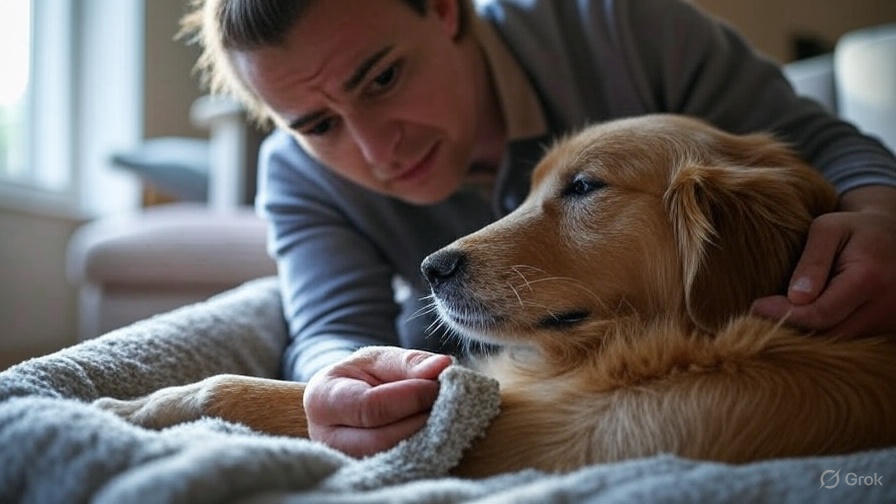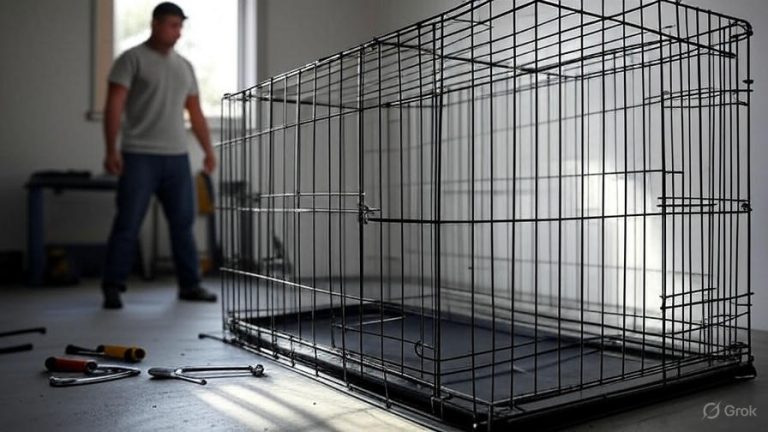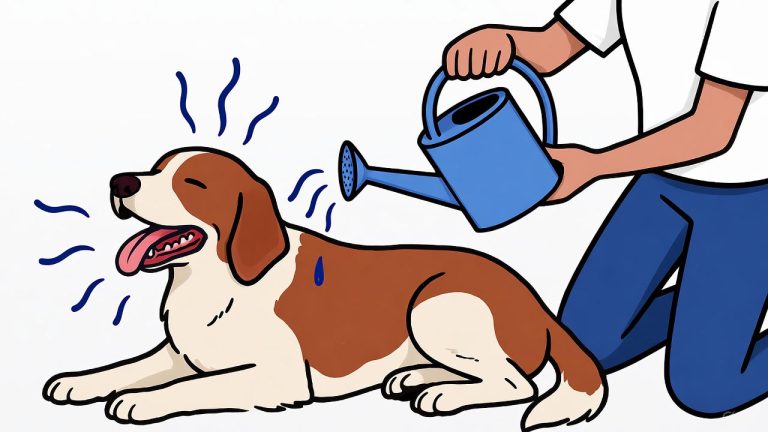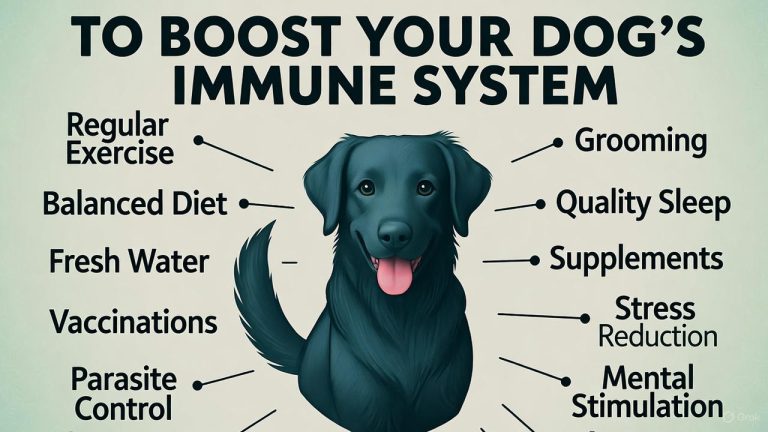How to Heal a Dog Wound Fast at Home?
Dog owners know that cuts, scrapes, and minor injuries happen frequently during daily activities. Your furry friend might return from a walk with a small cut or develop a scratch from playing too enthusiastically. While serious injuries require immediate veterinary attention, many minor wounds can heal quickly with proper home care.
Learning to treat your dog’s minor wounds at home saves time, reduces stress for your pet, and helps prevent infections. This comprehensive guide covers everything you need to know about accelerating your dog’s natural healing process safely and effectively.
Recognizing Different Types of Dog Wounds
Dogs experience various types of injuries during their active lives. Surface cuts typically occur from sharp objects like broken glass or metal edges. These wounds often bleed initially but remain shallow, affecting only the top layer of skin.
Abrasions happen when your dog’s skin scrapes against rough surfaces like concrete or gravel. These “road rash” type injuries may not bleed heavily but can collect dirt and debris easily. Puncture wounds result from thorns, nails, or other pointed objects penetrating the skin. Though small on the surface, these wounds can be deep and prone to infection.
Lacerations are longer, deeper cuts that may require stitches if they extend through multiple skin layers. Minor burns can occur from hot surfaces or spilled liquids. Each wound type requires specific care approaches for optimal healing.
Emergency Assessment: When Home Treatment Works
Before starting home treatment, you must accurately assess the wound’s severity. Minor cuts measuring less than half an inch and bleeding minimally respond well to home care. Shallow abrasions without embedded debris also heal effectively with proper cleaning and protection.
Surface scratches that don’t penetrate through all skin layers typically close within a few days with basic first aid. Small puncture wounds from thorns or splinters can heal at home once you remove the foreign object completely.
However, deep gashes exposing muscle or fat require professional veterinary care. Wounds that won’t stop bleeding after applying direct pressure for 10 minutes need immediate attention. Any injury showing signs of infection like excessive swelling, pus, or foul odor requires veterinary treatment.
Essential Supplies for Dog Wound Care
Stock your pet first aid kit with proper wound care supplies before emergencies arise. Sterile saline solution works best for cleaning wounds without causing tissue damage. Avoid hydrogen peroxide, which can actually slow healing by damaging healthy cells.
Clean gauze pads provide gentle wound cleaning and coverage. Medical tape secures bandages without pulling fur. Antibacterial ointment designed for pets helps prevent infection while promoting healing. Never use human medications without veterinary approval.
Disposable gloves protect both you and your pet from bacteria transfer. Clean towels help control bleeding and provide comfort. A muzzle or cone collar prevents your dog from licking or chewing the wound during healing. Sharp scissors allow you to trim hair around the injury site safely.
Step-by-Step Wound Cleaning Process
Start by calming your dog and securing them safely. Excited or anxious pets may snap or struggle during treatment, even if they’re normally gentle. Have someone help restrain your dog if needed, or use a muzzle for everyone’s safety.
Wash your hands thoroughly and put on disposable gloves. Examine the wound closely for embedded debris like glass, thorns, or dirt. Remove visible foreign objects carefully with clean tweezers, but don’t probe deeply or attempt to remove objects that seem firmly lodged.
Rinse the wound gently with sterile saline solution or clean water. Let the water flow over the injury to wash away bacteria and loose debris. Avoid scrubbing, which can damage tissue and slow healing. Pat the area dry with clean gauze pads, working from the center of the wound outward.
Trim excess hair around the wound with clean scissors to prevent contamination and improve visibility. Cut carefully to avoid enlarging the injury. Apply a thin layer of pet-safe antibacterial ointment to create a protective barrier against bacteria.
Natural Healing Accelerators That Actually Work
Several natural remedies can speed your dog’s healing process when used correctly. Raw honey contains powerful antibacterial properties that fight infection while keeping wounds moist for optimal healing. Use only medical-grade honey, not regular table honey, which may contain harmful bacteria.
Aloe vera gel soothes irritated skin and reduces inflammation. Use pure aloe vera without added chemicals or fragrances. Coconut oil provides antimicrobial benefits while keeping the wound area soft and pliable.
Turmeric paste made from turmeric powder and water creates a natural antiseptic dressing. This golden spice reduces inflammation and promotes tissue regeneration. Apply these natural remedies sparingly and only after thorough wound cleaning.
Colloidal silver spray offers antimicrobial protection without the harshness of chemical antiseptics. These natural options work best in combination with proper wound hygiene rather than as standalone treatments.
Proper Bandaging Techniques for Dogs
Correct bandaging protects wounds while allowing proper air circulation for healing. Start with a primary layer of non-stick gauze directly over the wound. This prevents the bandage from adhering to healing tissue.
Add an absorbent secondary layer to manage any drainage. Use cotton padding or additional gauze for this layer. The outer layer should provide protection and security without being too tight. Elastic bandages or medical tape work well for the final layer.
Check that you can slip one finger under the bandage comfortably. Bandages that are too tight restrict blood flow and actually slow healing. Change bandages daily or whenever they become wet or soiled.
Watch for signs that bandages are too tight, including swelling above or below the wrapped area, coldness in the extremity, or your dog showing increased discomfort. Remove bandages immediately if you notice these warning signs.
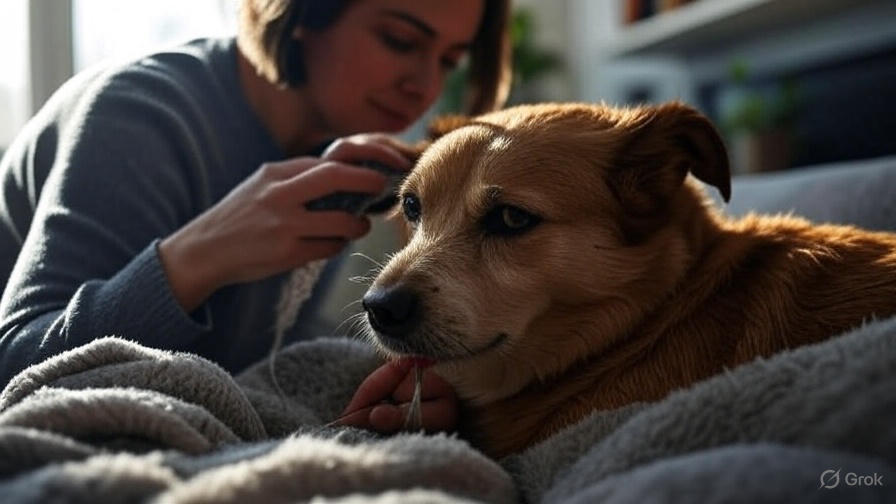
Signs Your Dog’s Wound Is Healing Properly
Healthy healing follows predictable patterns that you can monitor at home. During the first 24-48 hours, expect some swelling, redness, and warmth around the wound. This initial inflammatory response is normal and necessary for healing.
Blood clot formation creates a protective scab within the first day. Don’t pick at or remove these scabs, as they protect the developing tissue underneath. New pink tissue begins forming at the wound edges within 2-3 days.
The wound size should gradually decrease as healthy tissue grows inward from the edges. Drainage should be minimal and clear to slightly yellow. Strong, foul odors indicate infection and require veterinary attention.
Your dog’s behavior provides important healing clues. Pets with properly healing wounds typically show decreasing discomfort over time. They should maintain normal appetite and energy levels throughout the healing process.
Red Flags That Require Immediate Veterinary Care
Some wound complications require professional medical intervention regardless of your home care efforts. Increasing redness, swelling, or warmth after the first 48 hours suggests developing infection. Pus or thick, colored discharge indicates bacterial contamination.
Red streaking extending from the wound site signals serious infection spreading through your dog’s system. This condition can become life-threatening quickly and needs immediate veterinary treatment.
Wounds that reopen after initial healing, increase in size, or develop new bleeding also require professional care. Persistent bleeding that doesn’t respond to direct pressure indicates damage to larger blood vessels.
Your dog’s overall condition matters too. Loss of appetite, lethargy, or fever suggests systemic infection. Trust your instincts – if something seems wrong with your pet’s recovery, seek veterinary guidance promptly.
Nutrition and Supplements for Faster Healing
Proper nutrition provides the building blocks your dog’s body needs for tissue repair. High-quality protein supports new cell formation and tissue regeneration. Ensure your dog’s diet contains adequate protein from meat sources during healing periods.
Vitamin C aids collagen production, which forms the foundation of new skin tissue. While dogs produce their own vitamin C, supplementation during healing may provide additional benefits. Vitamin E supports immune function and protects healing tissue from damage.
Zinc deficiency slows wound healing significantly. Most commercial dog foods contain adequate zinc, but supplements may help during recovery from injuries. Omega-3 fatty acids reduce inflammation and support healthy skin regeneration.
Fresh water remains crucial for all healing processes. Dehydration slows every aspect of recovery, so ensure your dog has constant access to clean drinking water. Consider adding bone broth to encourage increased fluid intake while providing additional nutrients.
Exercise and Activity Management During Healing
Balance rest with appropriate activity levels during your dog’s recovery. Complete confinement rarely helps healing, but excessive activity can reopen wounds or delay tissue repair. Short, controlled walks on leash allow necessary movement without overexertion.
Restrict jumping, running, and rough play until wounds heal completely. These high-impact activities can stress healing tissue and cause reinjury. Swimming may seem gentle, but bacteria in water can cause serious wound infections.
Mental stimulation becomes extra important when physical activity is limited. Puzzle toys, training sessions, and calm games keep your dog engaged without physical stress. A bored dog is more likely to lick or chew at healing wounds.
Gradually increase activity levels as healing progresses. Start with short walks and slowly extend duration and intensity based on your dog’s comfort and wound appearance. Return to normal activity only after complete healing occurs.
Preventing Future Injuries Through Environmental Management
Proactive measures significantly reduce your dog’s injury risk. Regular yard inspections help identify potential hazards like broken glass, sharp metal edges, or thorny plants. Remove or secure dangerous items before they cause problems.
Keep your dog’s nails trimmed to prevent scratches during play or grooming. Long nails can catch on surfaces and tear, creating painful injuries. Regular grooming also helps you spot potential problem areas early.
Supervise interactions with other dogs, especially during initial meetings or high-energy play sessions. Dog fights can cause serious wounds that require extensive treatment. Training your dog to respond to recall commands helps prevent many outdoor injuries.
Consider protective gear for dogs with active lifestyles. Booties protect paw pads during hiking or running on rough surfaces. Life jackets prevent drowning and reduce injury risk during water activities.
Long-Term Scar Prevention and Skin Health
Proper wound care during healing significantly impacts final scar appearance. Keep healing wounds moist with appropriate ointments to prevent excessive scab formation. Dry wounds tend to heal with more noticeable scarring.
Massage healed areas gently with vitamin E oil or coconut oil to improve skin flexibility and reduce scar tissue formation. Start massage only after complete wound closure to avoid reopening injuries.
Sun protection helps prevent darkening of healed skin areas. Limit exposure to direct sunlight during healing, and consider using pet-safe sunscreen on areas with thin fur coverage.
Regular brushing and skin care maintain overall coat health and help you spot new issues early. Healthy skin heals faster and with less scarring than damaged or poorly maintained skin.
Building Your Confidence in Pet First Aid
Start with minor wounds to build your skills and confidence in pet first aid. Practice basic techniques like cleaning and bandaging on cooperative dogs when no emergency exists. This preparation makes real emergencies less stressful for everyone.
Keep detailed records of your dog’s injuries, treatments, and healing progress. Photos can help track improvement and provide valuable information for veterinary consultations if complications arise. Note what treatments work best for your individual pet.
Establish relationships with local veterinarians before emergencies occur. Know their hours, emergency policies, and after-hours contact information. Having this information readily available reduces stress during crisis situations.
Consider taking pet first aid classes to expand your knowledge and skills. Many organizations offer courses specifically designed for pet owners. These classes teach valuable techniques and help you recognize situations requiring professional care.
Remember that home wound care serves as a valuable skill for minor injuries, but never replaces professional veterinary medicine for serious conditions. Trust your instincts, monitor healing carefully, and seek professional help whenever you feel uncertain about your dog’s condition. With proper knowledge and preparation, you can help your furry friend heal quickly and safely from minor wounds while strengthening the bond between you through caring, attentive treatment.

